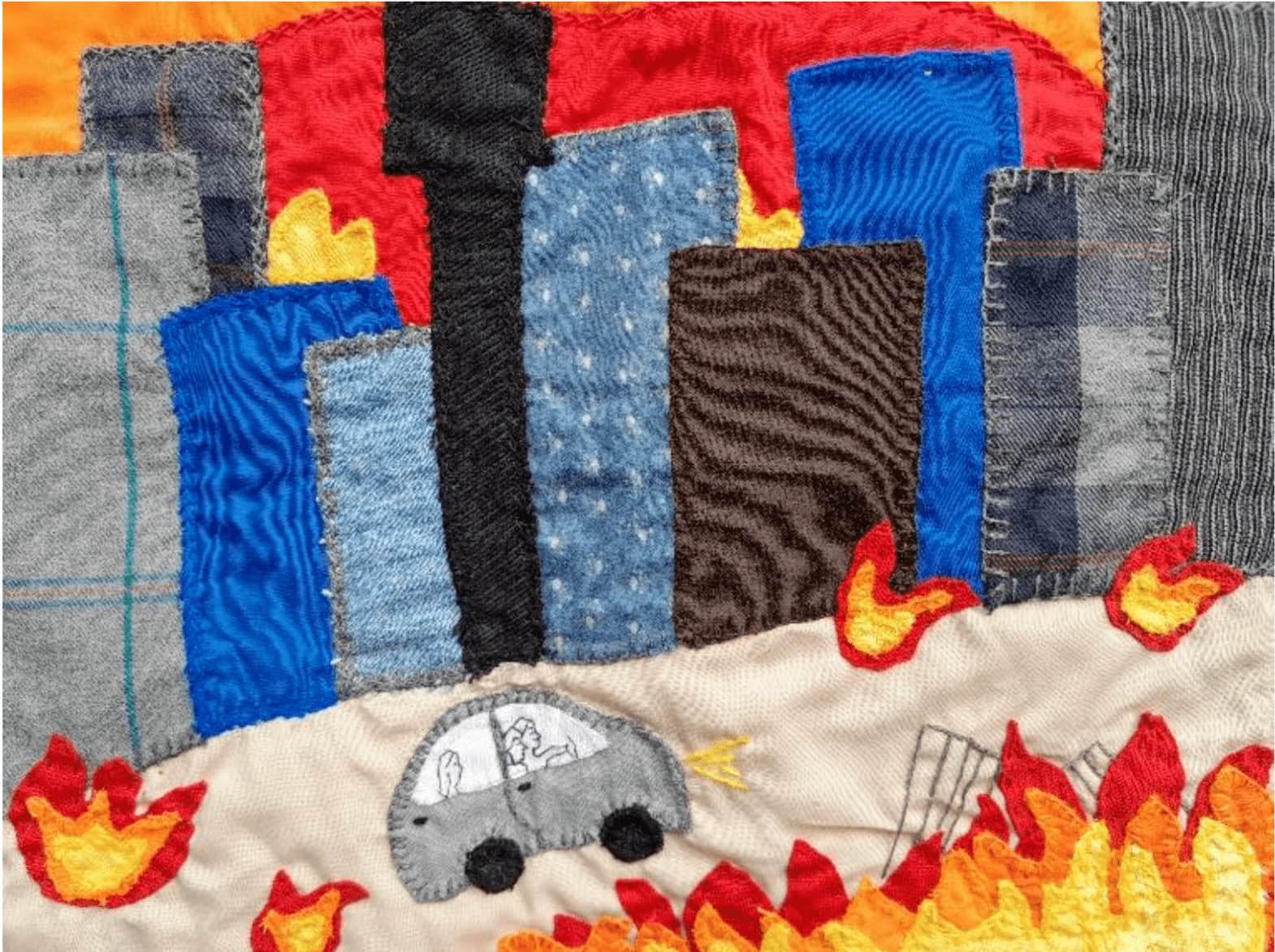
Saturday, October 14th, Tatter will host an in-person workshop with arpilleras expert Scarlett Yávar García. Scarlet will lead students into a deep understanding of the origins of Chilean arpilleras, teach pictoral stitching techniques, and get students started on a personal project of their own.
“Arpilleras” in English loosely translates to burlap in Spanish – descriptive of the common sackcloth fabric on which Chilean women appliqué vibrant narrative compositions. The compositions are colorful and lyrical but the roots of Chilean arpilleras are troubling.
Chilean families knew torture, illegal detentions, disappearances and murders first hand during Augusto Pinochet’s cruel dictatorship from 1973-1990.
Vicaría de la Solidaridad, a Catholic organization, responded by devoting itself to providing moral and legal support to women affected by abuse, detainment and/or kidnappings by Pinochet’s government. In search of answers and justice, they spent countless hours for years outside of bureaucratic offices waiting for information on their loved ones. It was there, under the guidance of a leader named Valentina Bonne, where the first arpilleras workshop began. With very few materials, they began to embroider and transfer their grief to the fabric. They soon began to sell them providing sustenance and entrepreneurial skills to their families.
At some point, Pinochet’s regime discovered that women were telling stories of human rights violations through their arpilleras. Women sewists then went underground to anonymously craft unsigned arpilleras to protect them and their families from identification.
Tatter and Scarlett enthusiastically invite you to join us this Saturday to immerse yourselves in this cathartic and expansive craft of storytelling.
BONUS: Scarlett shared the below on her practice and personal history with arpilleras.
Please take a moment to learn more about our instructor Scarlett and her story.
![]()
One of the most important aspects of arpilleras is their testimonial capacity. When we record our stories and our memories, it allows us to recognize the past within the present.
In my country, the legacy of street textile art as a form of protest against the Pinochet regime in the 1970s has been reinvigorated following the “social outbreak” of 2018. Many women have taken to the streets again with their textiles and once again, embroidery, threads and needles have left the privacy of the domestic space to share our needs and desires with the world.

This arpillera is very important to me, because it is a historic representation of October 18 2019, the day of the social outbreak. This textile shows our attempt to get home as we were trying to cross the city while it was literally on fire. It was exciting, it was terrifying, it was happy, it was sad, it was scary. All the mixed feelings you could have were there.
And I don’t want to forget it.
There are people who write to let off steam, or go to therapy, or talk to their friends, or write songs. I sew.
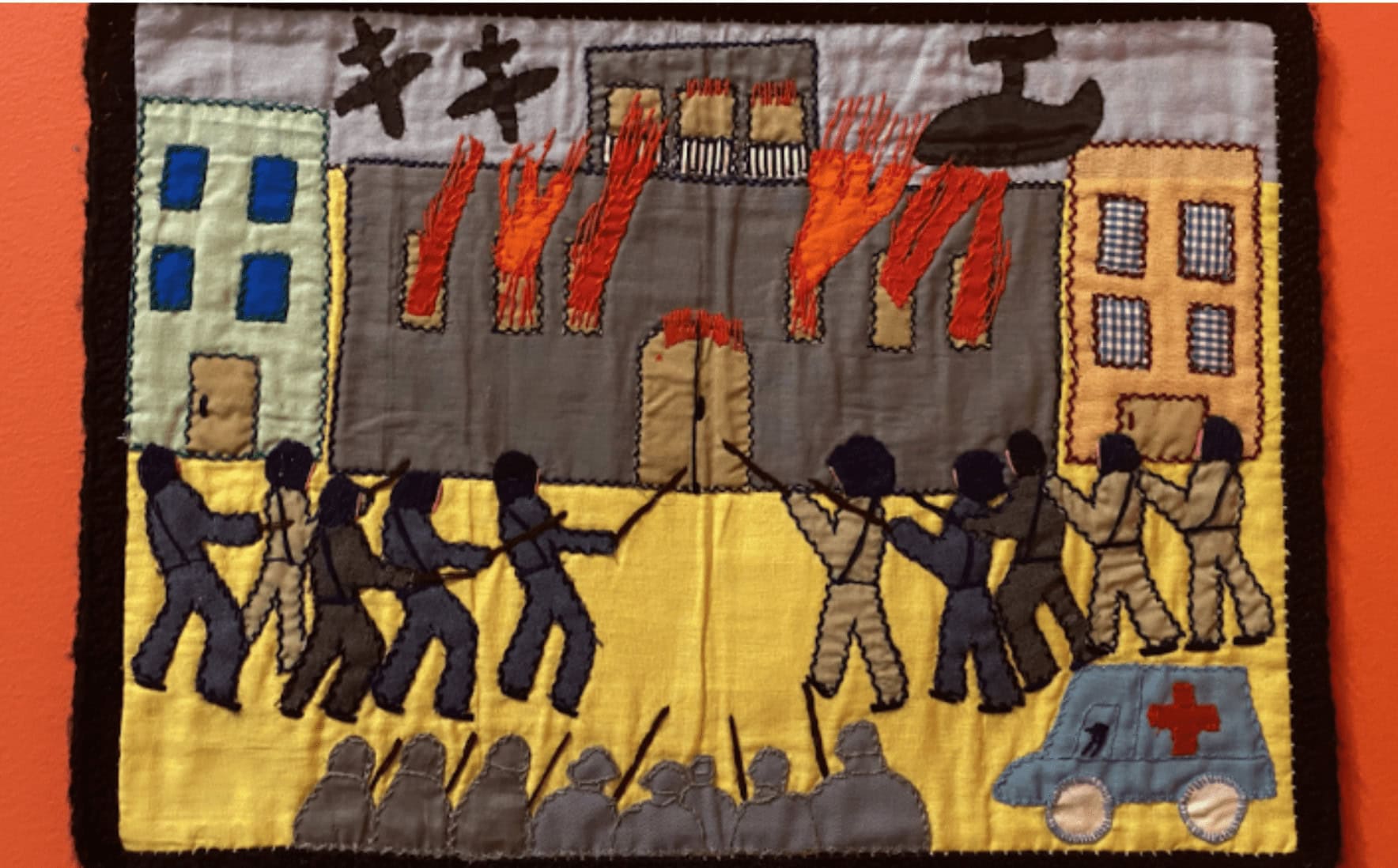
Arpilleras from Arte, Mujer y Memoria: Arpilleras from Chile at the Museum of Latin American Art, Long Beach, California
When I made the October 18th arpillera, I couldn’t stop thinking about this image from Arte, Mujer y Memoria (Art, Women, and Memory). I couldn’t stop thinking about how afraid the woman who embroidered and recorded must have felt when the military bombed the government house, La Moneda, in 1973. It is important to highlight as well that arpilleras artisans had an important community role which far surpasses the documentation of painful events.
In the 70s and 80s, arpillera workshops grew throughout the city of Santiago in Chile primarily in areas most impacted by poverty. These workshops were very important for the women, both emotionally and economically, allowing them to use their art to support their families. The arpilleras below are taken from 2 workshops during this time. They are my favorite works in the Museo de la Memoria y los Derechos Humanos (the Museum of Memory and Human Rights) in Santiago.
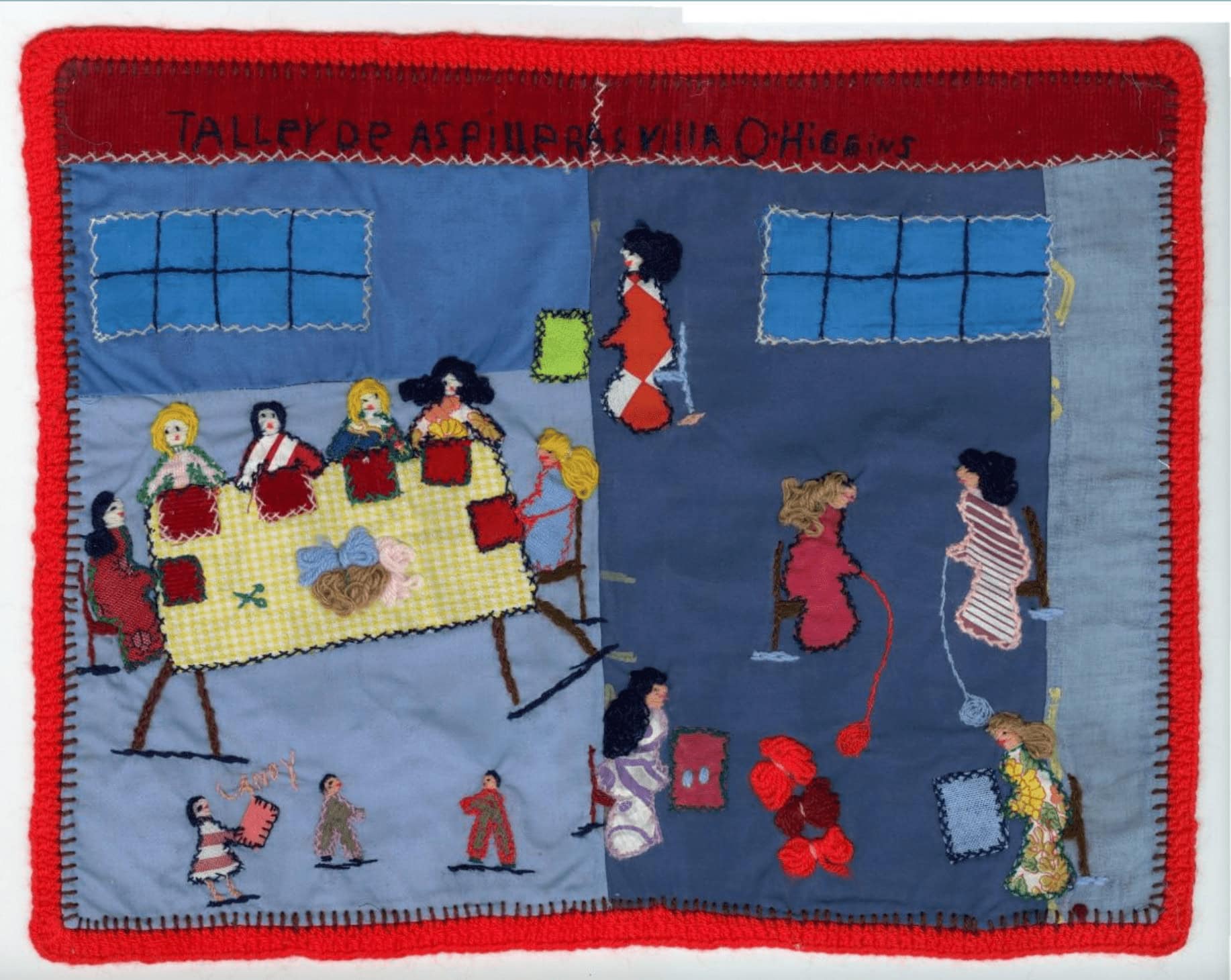
Taller arpillera Villa O’Higgins from the Museo de la Memoria y los Derechos Humanos in Santiago, Chile

Nacen los talleres de arpilleras from the Museo de la Memoria y los Derechos Humanos in Santiago, Chile
I don’t remember the first time I saw an arpillera. It was probably in my childhood, seeing a small textile hanging in the living room of someone’s house. What I do remember is the first time I saw an arpillera on a bread bag.
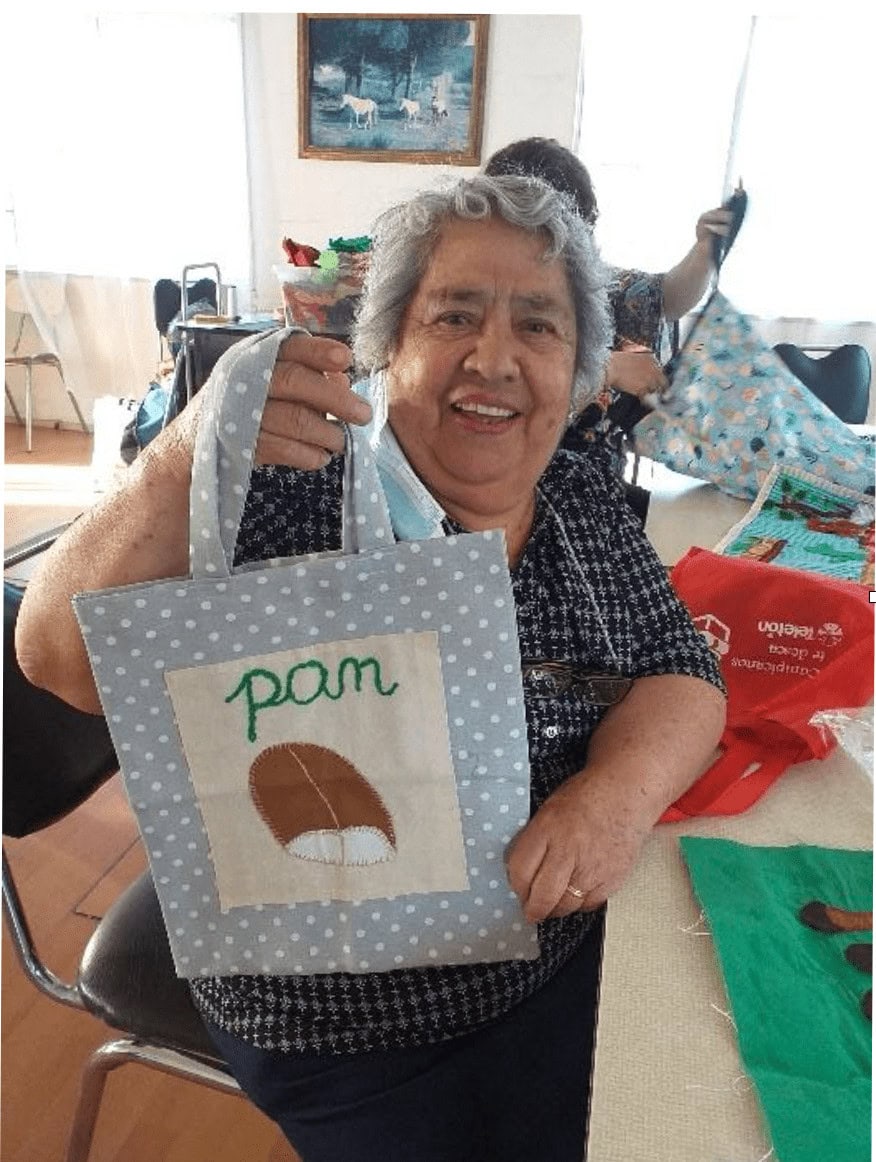
From that moment it was impossible for me not fall in love with the many things an arpillera can be. It is not always an image of denunciation or fear. This textile bread bag represents a landscape, with the mountain range and its little women in a field with flowers. I love that the arpillera accompanying the woman is used to buy bread, an everyday act.
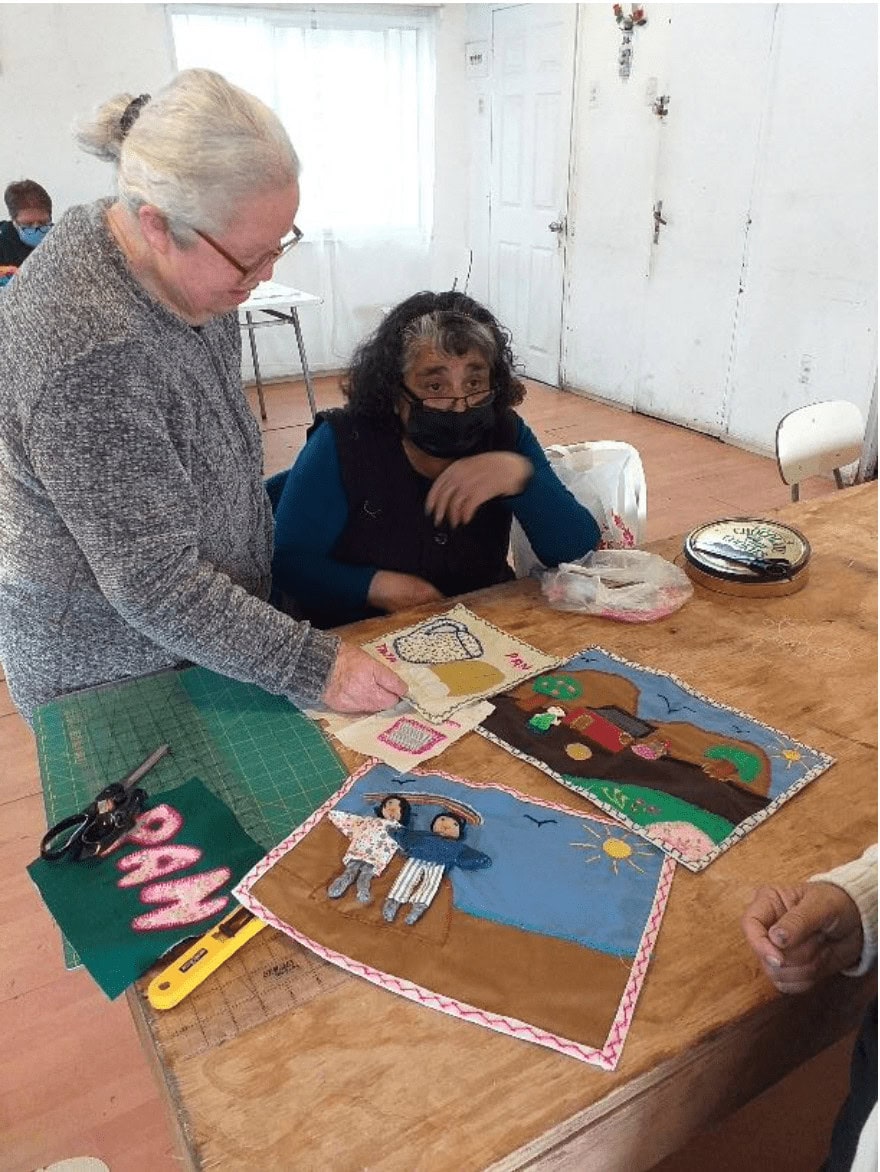
Life inevitably brought me closer to the arpilleras and their history in 2018. It seemed to me that it was necessary to reevaluate the work of these women who in the 70s risked their lives to record their stories in cloth. For the same reason, it was very difficult for me to decide to teach how to make arpilleras.
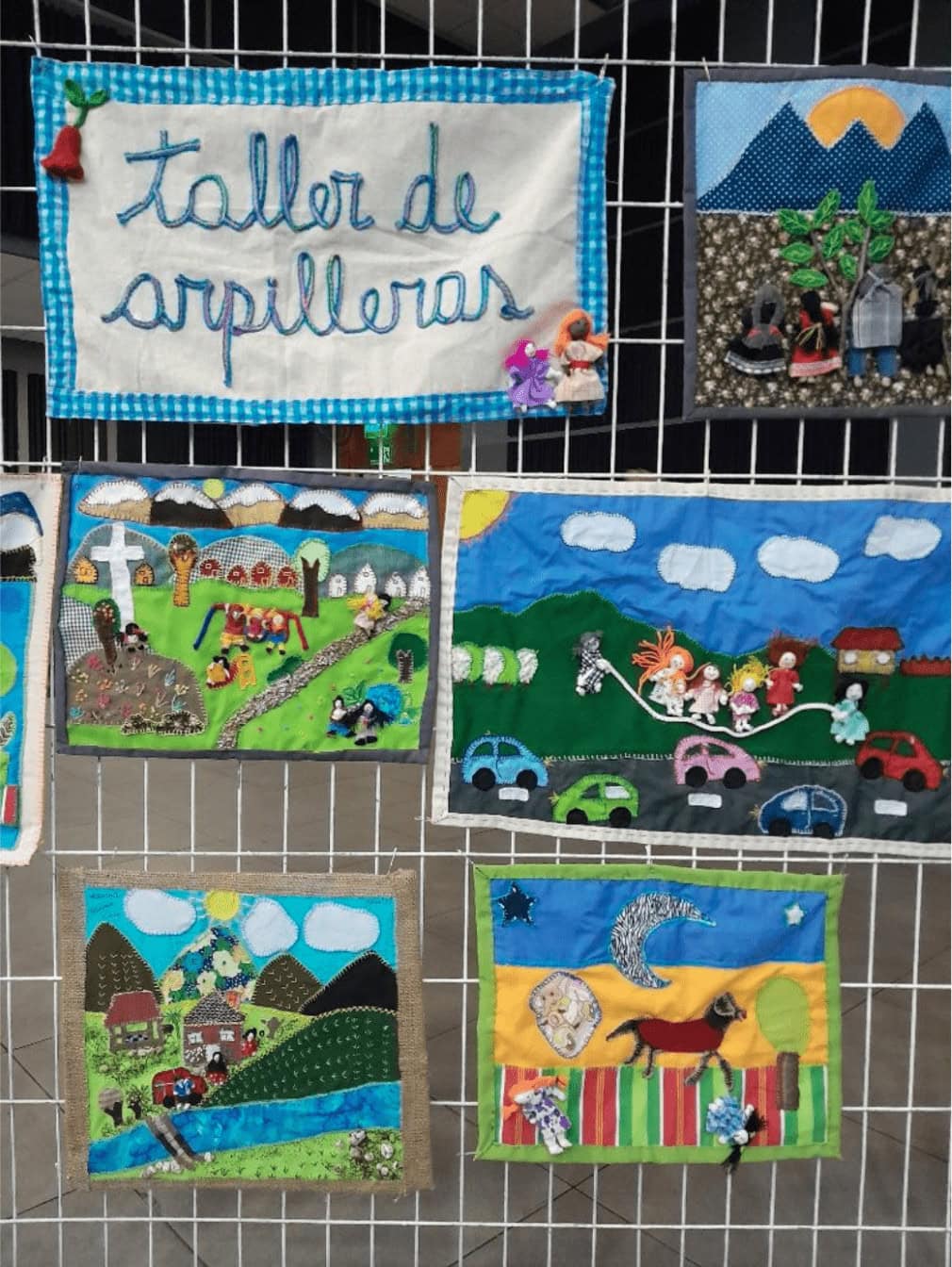
It took me many years; I needed to feel like I was up to par and that I wasn’t disrespecting the women who make them and their art, especially because my relationship with arpilleras goes beyond making. I spend most of my time interacting with arpilleras researching, reading, and continuing to learn their history.
What I want most in my life is to continue telling and bringing that story to more people. There is a saying that goes “a people without memory is people without a future,” un pueblo sin memoria es un pueblo sin futuro. In this class I want to invite people to learn the history so that they can create with an eye on the future.
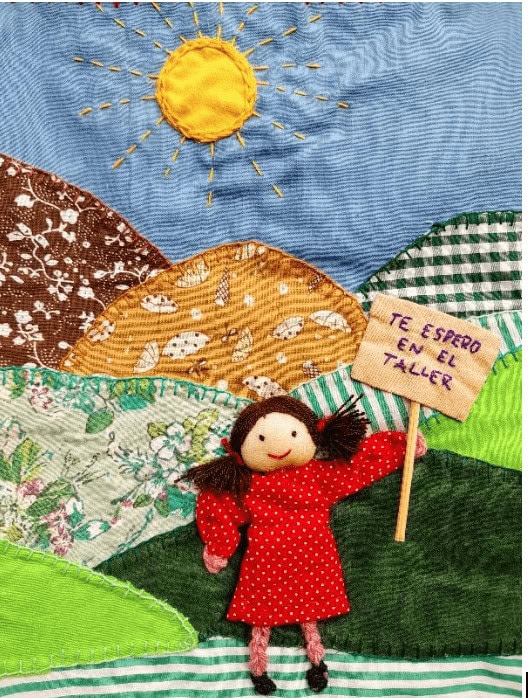
This image is very simple, but the sign the girl has says “I’ll wait for you at the workshop.” I am excited to see all of you there.
